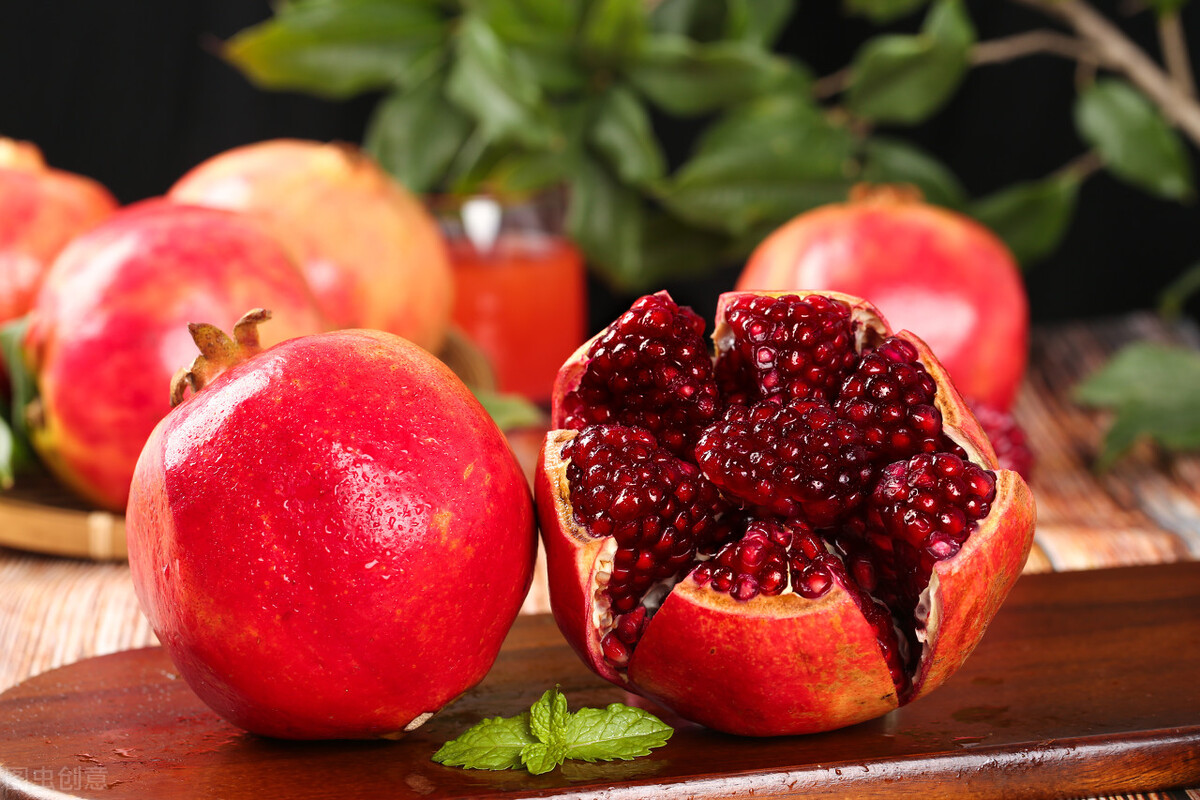Pomegranate, belongs to the dicotyledonous plant myrtle pomegranate family pomegranate genus, it is divided into ornamental pomegranate (potted or horticultural) and edible pomegranate (deciduous tree or deciduous shrub), rich in nutritional value, is a fruit with a very high vitamin C content in the fruit, and has a certain medicinal value, pomegranate leaves, pomegranate skin, pomegranate flowers can be used in medicine.
The history of pomegranate development in China can be traced back to the Han Dynasty, introduced from the western region, China's pomegranate products are widely distributed, especially in Henan, Shandong, Jiangsu, Anhui planting area is relatively large, of which Jiangsu pomegranate quality is very good (mainly crystal pomegranate), and Anhui Huaiyuan pomegranate is more famous.

With the continuous updating of pomegranate varieties, Sichuan Huili, another major production area, has come to the fore, forming a strong brand influence, and the current development of pomegranates in Mengzi, Yunnan is also very good.
Pomegranate planting management technology - common disease control
Common diseases of pomegranate are: root rot, anthrax, white rot, etc., root rot is mainly caused by soil compaction and the reduction of beneficial bacteria in the soil, the increase of harmful bacteria, which can be solved from the improvement of the soil, the elimination of soil compaction, and the increase of beneficial bacteria in the soil, such as the choice of *** company's ** rooting agent and ** microbial fungus, but also can use fungicides to do soil treatment.
Anthrax and white rot are controlled in two aspects, prevented with broad-spectrum fungicides (Bordeaux liquid, carbendazim, etc.), and can also be treated with some agents when the disease occurs.
Pomegranate cultivation management technology - common pest control
Pomegranate common pests are aphids, aphids, green blind bugs, twill moths, etc., aphids mostly occur in young leaf tissues, and strong fertility, you can use acetamiprid or imidacloprid timely control; ticks and blind bugs are familiar with hard shell pests, it is relatively difficult to control, and more insecticides with good permeability are used. Chlorpyrifos (Lesben) is commonly recommended for control, and nocturnal twill moths can be controlled with pesticides such as methanotropin and avermectin.
In the process of using pesticides, we must pay attention to the time of medication, the pomegranate flowering period is relatively sensitive, and the pomegranate flowering period is avoided as much as possible in the use of drugs.
Pomegranate planting management technology - technical fertilization method
Pomegranates are divided into ornamental pomegranates and fruit pomegranates, ornamental pomegranates (horticultural planting and potted planting), these two pomegranates are mainly soil conditioning, mostly using organic fertilizers. The potted plants are soiled every two to three years, paying attention to the replenishment of organic matter and the sterilization of the soil.
The main points of fertilization technology are on the planting of fruit pomegranates, pomegranates are mostly planted in mountainous and hilly areas, and the water retention and fertilizer retention of the soil are poorer, so the bottom fertilizer and topdressing are very important.
Pomegranate planting management technology - bottom fertilizer method
Pomegranate after a large number of picking (generally in late September and early October) use the bottom fertilizer, you can use ** balance granular fertilizer, because pomegranate is a flowering fruit tree, nitrogen, phosphorus and potassium nutrition are very important, ** balance granular water-soluble fertilizer nutrients are full and long-lasting, while applying ** microbial agents, can increase the beneficial bacteria in the soil to improve the soil.
Pomegranate planting management technology - topdressing method
Pomegranate topdressing is generally carried out three times, the first use in the early flowering stage, you can use ** high nitrogen large element water soluble fertilizer and ** rooting agent, supplement nutrition and promote rooting; the second use in about 20 days after flowering, apply ** balanced granular water-soluble fertilizer, nitrogen, phosphorus and potassium nutrients at the same time supplement; the third time in the rapid expansion period of pomegranate, the use of ** high potassium large number of elements water-soluble fertilizer, promote fruit expansion, improve quality, increase yield. During the whole growth process, the foliar spray of ** calcium fertilizer and ** potassium dihydrogen phosphate should be applied in time.
The content materials mentioned in this article are all original feedback from customers, and please do not reprint them without authorization.